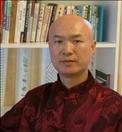 Traditional Chinese Medicine (TCM) is a natural medicine practiced in China for more than 5000 years.
Traditional Chinese Medicine (TCM) is a natural medicine practiced in China for more than 5000 years.
It is believed that TCM was reorganised and established by ancient Chinese sages, such as Huang Di, Shen Nong and Qi Bo. TCM recognises oneness of Nature and humankind, holism of the human body, soul and spirit and the Meridian system.
‘Yin Yang’ is a term used to describe the interactions and transformations of opposite or contrary aspects of things, or opposite aspects of one thing. The ideas and philosophies can be successfully applied in diagnosis and treatment of diseases, and in general health care. TCM is getting more and more popular over the world.
Acupuncture
Acupuncture is one of the principal components of TCM. It is based on the belief that living beings have vital energy called Qi that circulates through 12 invisible energy lines known as Meridians in the body.
Each Meridian is associated with an organ system such as liver, heart, spleen, lung, kidney, gallbladder and large intestine.
In a healthy human body, the Qi flows freely throughout the Meridians in a balanced and regular way, maintaining good health.
An imbalance in the flow of Qi throughout a Meridian is how a disease begins.
Acupuncture works to “re-program” and restore normal flow of Qi by manipulating thin, solid needles that have been inserted into Meridian points of body.
The general belief is that acupuncture is safe when administered by well-trained practitioners using sterile needles, reducing the risk of adverse effects.
Although sometimes described merely as a means of pain relief, Acupuncture is actually used to treat people with a wide range of illnesses. Its focus is on improving the overall balance and wellbeing of the patient, rather than subduing superficial symptoms.
The skill of an Acupuncturist depends on their perceptions about the ideas and philosophies of TCM, the ability to understand the physiology of body and pathogenesis of diseases, ability to track the cause of the disease, selection of meridian points and manipulation of needles.
Chinese Herbal
Chinese herbal Medicine refers to another principal component of TCM.
The first traditionally recognised herbalist is Shen Nong who is said to have lived around 2800 BC. He reportedly tasted hundreds of herbs and imparted his knowledge of medicinal and poisonous plants to farmers.
His book ‘Shennong’s Materia Medica,’ is considered as the oldest book on Chinese Herbal Medicine. It classifies 365 species of roots, grass, woods, furs, animals and stones into three categories of herbal medicine.
Every Chinese herb has its unique nature and flavour, and can be used individually or in a formula to regulate the balance and maintain the functions of human body.
There are four Natures and five Flavours. The Four Natures are hot, warm, cool, and cold.
Hot and warm herbs are used to warm stomach, eliminate coldness, and tonify the body, while cool and cold herbs are used to clear heat, cultivate body fluid and detoxicate the body.
Healthy flavours
The Five Flavors are acrid/pungent, sweet, bitter, sour, and salty, each corresponding to one of the organ system, also each flavor implies certain therapeutic actions to the body, such as, the pungent can promote the circulation of Qi and blood, disperse Qi; the sweet can tonify the body, relieve pain, moisten; the bitter can clear heat in heart, clear summer heat, eliminate dampness; the sour can induce astringency, tonify blood; the salty can soften hard masses, tonify essence of kidney.
There are roughly 13,000 herbs used in China and over 100,000 medicinal formulas recorded in the ancient literature. Plants including certain amount of food, vegetables and nuts are the most common elements used. The forms of formula include decoction, pills and powders. Chinese herbs also can be applied externally.
Tui Na
Tui Na is a form of Chinese therapeutic massage which is a hands-on body treatment.
It uses Chinese Medicine principles to bring balance to the body. The practitioner may brush, knead, roll/press and rub different Meridian points or areas of body to get the Qi moving in the Meridians as well as the muscles.
It is not an effective for pain syndromes such as arthritis, sciatica, muscle spasms and pain in the back, neck, and shoulders.
It also helps chronic conditions such as insomnia, chronic fatigue, digestive dysfunction, circulatory problems, hormonal imbalance, constipation, migraines, stress, anxieties, and depressions.
Harry Chen is an Acupuncturist and Herbalist of traditional Chinese Medicine. He is based in Auckland.






